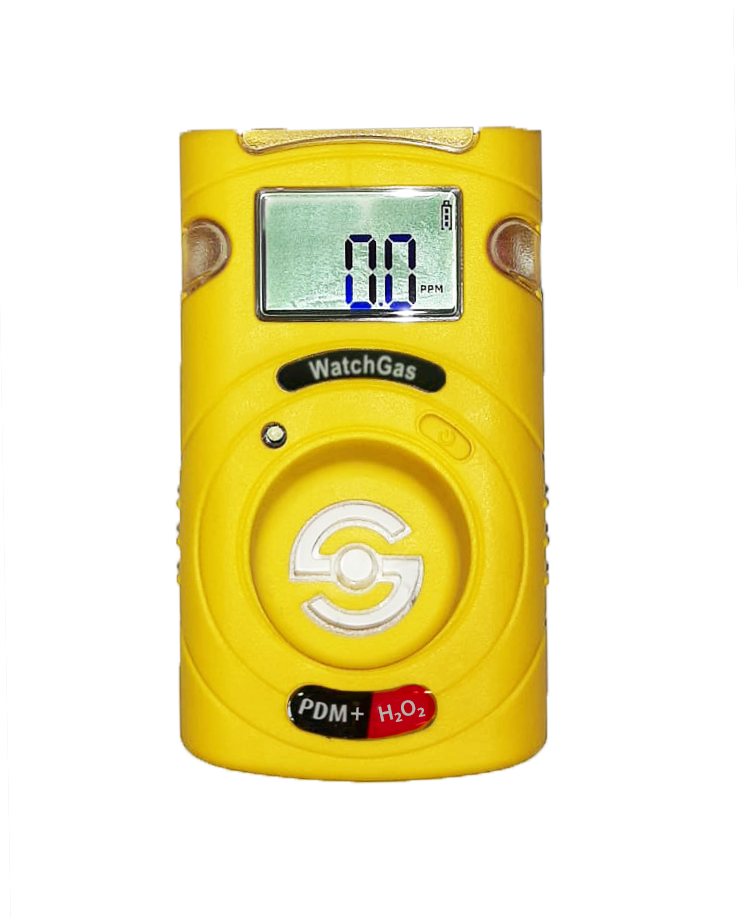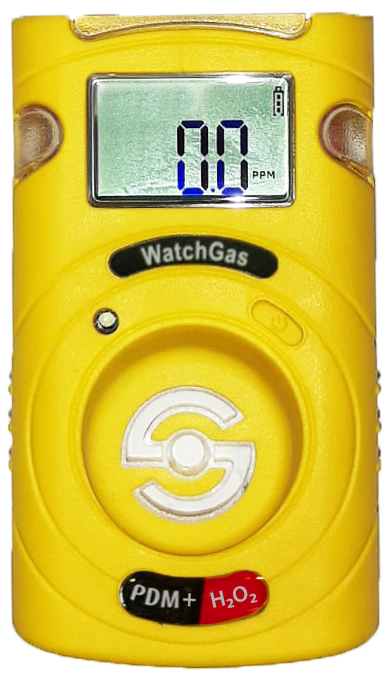It's well known that Hydrogen Peroxide can be used for hair bleaching, but there are a lot of other uses as well.
In this blog we will discuss nine uses for Hydrogen Peroxide and we introduce to you the new WatchGas PDM+. The perfect gas detector to measure Hydrogen Peroxide (H2O2).
The Industrial market has long benefited from the implementation of Hydrogen Peroxide based solutions to solve a variety of water, wastewater, and air pollution treatment challenges.
Hydrogen Peroxide is unstable and slowly decomposes in the presence of light. Because of its instability, Hydrogen Peroxide is typically stored with a stabilizer in a weakly acidic solution in a dark coloured bottle. Hydrogen Peroxide is found in biological systems including the human body. Enzymes that use or decompose Hydrogen Peroxide are classified as peroxidases
Your bottle of Hydrogen Peroxide is too valuable to just stay in your first-aid kit. While the inexpensive liquid is known for its medical uses and bleaching hair, it's also a versatile substance that can be used in a host of other ways.
Hydrogen Peroxide (formula H2O2) is a chemical compound that's a combination of hydrogen and water. The clear liquid acts as a mild antiseptic and comes in various potencies depending on its purpose: 3 percent (household use), 6 to 10 percent (hair bleaching), 35 percent (food-grade) and 90 percent (industrial). Most stores carry the 3 percent solution, packaged in a signature brown bottle
For your personal protection we offer you the PDM+ H2O2
0,0 - 99,9 ppm NON-ATEX

The unit can be supplied with an optional auxiliary pump.
For years, medical professionals recommended using Hydrogen Peroxide to treat minor scrapes and cuts. That's because when it's placed on the skin, it foams, which indicates it's killing bacteria. Today, doctors know Hydrogen Peroxide also kills healthy cells, so many no longer recommend its use for that purpose. It also can be harmful if it gets in your eyes, covers a large area of your skin or is ingested, especially the food-grade Hydrogen Peroxide.
But no worries. Hydrogen Peroxide has many other helpful applications, some of which might be new to you. Here are nine.
1. Remove Stains
Industrial Hydrogen Peroxide is used for bleaching of chemical pulp, mechanical pulp, and recycled pulp (de-inking). Use of industrial Hydrogen Peroxide in pulp & paper bleaching increases brightness levels, improves brightness stability, and reduces manufacturing cost, as it is the only one chemical that is required
2. Disinfectant
Hydrogen Peroxide is used in certain waste-water treatment processes to remove organic impurities. In advanced oxidation processing, the Fenton reaction gives the highly reactive hydroxyl radical (·OH). This degrades organic compounds, including those that are ordinarily robust, such as aromatic or halogenated compounds. It can also oxidize Sulfur based compounds present in the waste; which is beneficial as it generally reduces their odour.
Hydrogen Peroxide may be used for the sterilization of various surfaces, including surgical tools, and may be deployed as a vapour for room sterilization. H2O2 demonstrates broad-spectrum efficacy against viruses, bacteria, yeasts, and bacterial spores.
Now with the Corona Virus its application is soaring.
3. Food/Aseptic Packaging
Hydrogen Peroxide is a highly microbiologically safe reagent. Therefore, it is used as a sterilizing agent for the internal aseptic zones of the manufacturing machines and the surface of the packaging material that will be in contact with the food.
4. Electronics Industry
In this field, it finds its use as an oxidizing and a cleaning agent. The production process of printed circuits boards uses Hydrogen Peroxide as an etchant. The manufacturing process of semiconductors uses high-quality electronic grade Hydrogen Peroxide as an oxidizing and cleaning agent.
5. Soil remediation
Hydrogen Peroxide is environmentally and ecologically friendly; hence, it finds use in a variety of applications related to the environment. The process uses hydroxyl radicals to decompose toxic substances. Technological processes also use Hydrogen Peroxide to reduce their negative environmental impact. Soil remediation, when poluted with Hydro Carbons, is often done using H2O2.
6. Chemical Synthesis
In this field, it has found its use as an oxidizing agent. Hydrogen Peroxide has a low molecular weight; it is thus a more efficient oxidizing agent than potassium permanganate or dichromate. It is solvable in several organic solvents including water and the substrate itself.
7. Kills Mildew and Mold
As we noted earlier, Hydrogen Peroxide kills bacteria, but it also dispatches fungi such as mold and mildew. So grab a spray bottle of hydrogen and spray your bathroom fixtures, floors, walls, humidifier, dehumidifier, even your shower curtain. That fizzy sound will tell you it's working.
8. Helps grow your garden
Gardeners know one of the best substances for their plants is Hydrogen Peroxide. The all-purpose liquid can help with pest control, prevent infection on damaged trees, kill foliage fungus and combat root rot, as well as improve plant growth. That extra oxygen causes the roots to absorb more nutrients. For pest control or growth, add one teaspoon to one cup of water in a spray bottle and mist the plant. To combat root rot or fungal infections, use one tablespoon per cup of water.
9. Textile Industry
Hydrogen Peroxide is the prime bleaching agent in natural and synthetic fibers treatment, which include wool, linen, cotton, silk, and rayon. It gives the fibers a high degree of brightness while at the same time preserving their mechanical properties.
note: The regular strength Hydrogen Peroxide (3-5 percent) is OK to ingest, but higher strengths (10 percent or more) can be toxic if swallowed.
Hydrogen Peroxyde is dangerous when the vapour is inhaled. The 8 hour TWA limit for H202 is 1 ppm, and the 15 minute STEL is 2 ppm as per UK EH40. Gas detection should be used when handling H2O2 for personal safety.
Also interesting
The most common mistakes regarding gas detection (and the calibration of a gas detector)

